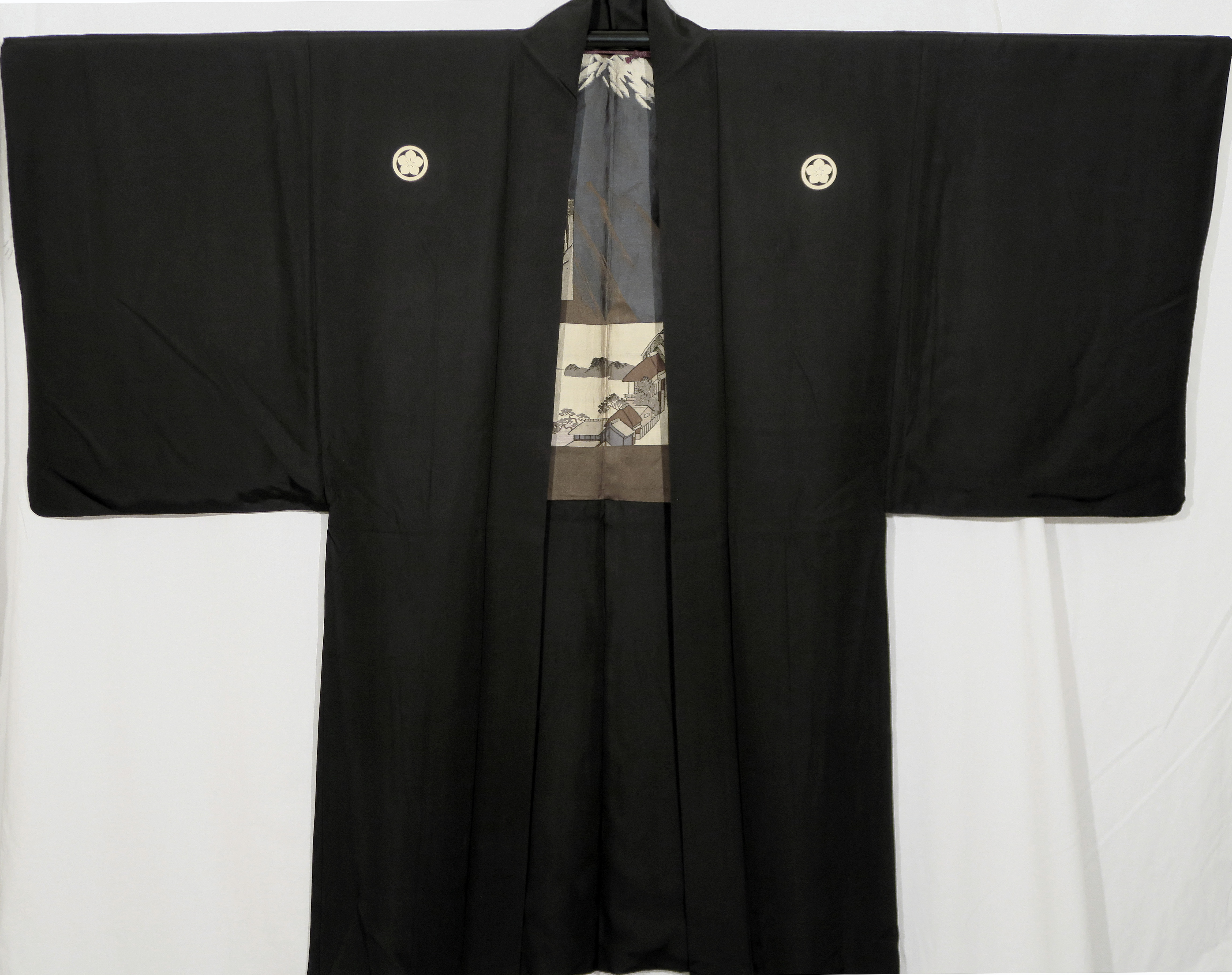Description
This Japanese Man’s Haori or formal overcoat is a striking example of a cultural statement representing the height of formal ware for centuries. This particular Haori has been entirely hand woven, handmade, and totally reversible. What makes the Haori for men so intriguing is the fact that the main source of decoration is on the inside back lining panel of the garment. To include such artistic decoration on an inner lining reflected the idea that real luxury was found in hidden places, and did not consist of overt displays. This concept was incorporated into what the Japanese called (“Iki”) fashionable in the late Edo/Early Meiji Eras. This concept reflected the wearer’s exquisite sense of beauty without betraying one’s sense of style to the outside world.
The outer layer of the garment is a very heavy, high quality, solid black Satin Silk with the exception of five white circles within which a pictorial symbol of the Family Crest or (“Mon”) has been painted. The white of the Crest is a striking contrast to the deep black of the formal topcoat, and because it appears five times, it denotes that this garment was intended to be worn for formal occasions. Less formal garments would have one or three crests on the outside. The Crest is that of the Plum Blossom, (“Ume”), which represents more than just beauty. It was also revered for its strength and fortitude as it was the first flower to appear near the end of winter, announcing the coming of spring. Because of its endurance, it quickly became one of the most popular motifs in Japanese heraldry. This version of the plum blossom has been encased in a heavy white circle (“Wa”) which carries obvious connotations of completeness. An enclosure of this nature served several purposes: one, it highlighted the interior design, increasing its visibility; and two, it allowed branches of the same family to add minor variations to individualize their own family line,
The inner back lining panel of this dramatic Haori has been intricately hand woven in an unusual arrangement. The highlights from the two inset rectangular scenes shine on the dark burnished bronze background of the inner lining which continues around the front of the garment. The background setting for these scenes has been woven in a rare and unusual shade of dark teal, high lighting the dramatic vista of a towering snow topped Mt Fuji (Japan’s most revered mountain) on which is overlaid the two rectangular bucolic scenes.
The top inset accentuates the deep red of the Japanese Maples (“Kaede”) through which the villagers must walk in order to attain the top of the mountain pass. It uniquely portrays an autumn scene which identifies the season in which this Haori was intended to be worn. The lower rectangle appears to represent the village (“Murasato”) from which the individuals started their climb. It is set on the banks of the Inland Sea which provided sustenance and a living for many of those within the village. The boat on the sea is larger than would be expected of a small isolated village which indicates that this was a more prosperous settlement, drawing larger merchant trade.
Only a Master Weaver would have the skill necessary to create a design with the intricacy of this artwork. Thus, only a man of great wealth and very high status within Court Society of old Japan would have been able to wear such a magnificent garment. This is a fabulous work of art in pristine condition that has remained a treasured heirloom for generations.











